Life
Life is a characteristic that distinguishes physical entities that have biological processes, such as growth, reproduction, and response to stimuli, from those that do not, either because such functions have ceased (death), or because they never had such functions and are classified as inanimate. The study of life is known as biology, and it encompasses a wide range of topics, including the structure, function, growth, origin, evolution, and distribution of living organisms.
Characteristics of Life
- Cellular Organization: All living things are composed of one or more cells, which are the basic units of structure and function in an organism.
- Reproduction: Living organisms have the ability to reproduce and pass genetic information to their offspring.
- Growth and Development: Living things grow and undergo changes in form as they mature.
- Response to Stimuli: Living organisms respond to external stimuli, such as light, temperature, and touch.
- Metabolism: Living things obtain and use energy to carry out their life processes.
- Homeostasis: Living organisms maintain a stable internal environment despite external changes.
- Heredity: Living organisms pass genetic information from one generation to the next.
- Adaptation: Living organisms evolve and adapt to their environment over time.
Study Guide
Here are some key points to focus on when studying the topic of life:
- Understand the characteristics that define something as living, including cellular organization, reproduction, growth and development, response to stimuli, metabolism, homeostasis, heredity, and adaptation.
- Explore the different levels of organization within living organisms, from cells to tissues, organs, and organ systems.
- Learn about the diversity of life on Earth, including the various domains, kingdoms, and species of living organisms.
- Examine the processes involved in the growth and development of living organisms, including cell division, differentiation, and embryonic development.
- Investigate the mechanisms of inheritance and genetic variation, including the role of DNA and the principles of genetics.
- Explore the ways in which living organisms interact with their environment and the adaptations that have evolved as a result of these interactions.
- Consider the ethical and societal implications of advancements in the field of biology, including biotechnology and genetic engineering.
By mastering these concepts and topics, you will develop a comprehensive understanding of the fundamental aspects of life and the science of biology.
[Life] Related Worksheets and Study Guides:
.◂Science Worksheets and Study Guides Fourth Grade. Cells- The building blocks of living things
Study Guide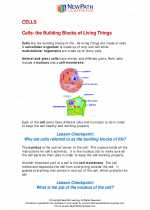 Cells- The building blocks of living things
Cells- The building blocks of living things  Activity Lesson
Activity Lesson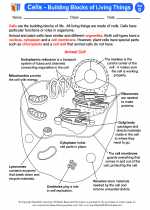 Cells - Building Blocks of Living Things
Cells - Building Blocks of Living Things  Worksheet/Answer key
Worksheet/Answer key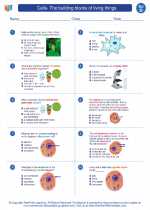 Cells- The building blocks of living things
Cells- The building blocks of living things  Worksheet/Answer key
Worksheet/Answer key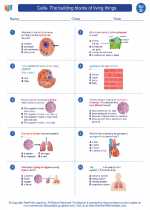 Cells- The building blocks of living things
Cells- The building blocks of living things  Worksheet/Answer key
Worksheet/Answer key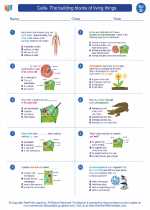 Cells- The building blocks of living things
Cells- The building blocks of living things  Worksheet/Answer key
Worksheet/Answer key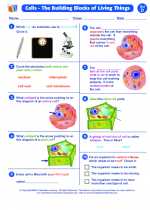 Cells - The Building Blocks of Living Things
Cells - The Building Blocks of Living Things  Worksheet/Answer key
Worksheet/Answer key Focus In
Focus In  Vocabulary/Answer key
Vocabulary/Answer key Cells- The building blocks of living things
Cells- The building blocks of living things  Vocabulary/Answer key
Vocabulary/Answer key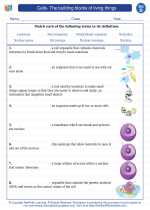 Cells- The building blocks of living things
Cells- The building blocks of living things  Vocabulary/Answer key
Vocabulary/Answer key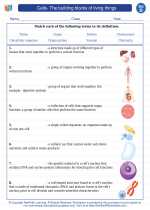 Cells- The building blocks of living things
Cells- The building blocks of living things 

 Activity Lesson
Activity Lesson
 Worksheet/Answer key
Worksheet/Answer key
 Worksheet/Answer key
Worksheet/Answer key
 Worksheet/Answer key
Worksheet/Answer key
 Worksheet/Answer key
Worksheet/Answer key
 Worksheet/Answer key
Worksheet/Answer key
 Vocabulary/Answer key
Vocabulary/Answer key
 Vocabulary/Answer key
Vocabulary/Answer key
 Vocabulary/Answer key
Vocabulary/Answer key

The resources above cover the following skills:
The Living Environment: Students understand that cells are the basic unit of life, that all life as we know it has evolved through genetic transfer and natural selection to create a great diversity of organisms, and that these organisms create interdependent webs through which matter and energy flow. Students understand similarities and differences between humans and other organisms and the interconnections of these interdependent webs.
Cells: Students describe how living things are made up of one or more cells and the ways cells help organisms meet their basic needs.
Give examples of organisms that consist of a single cell and organisms that are made of a collection of cells.